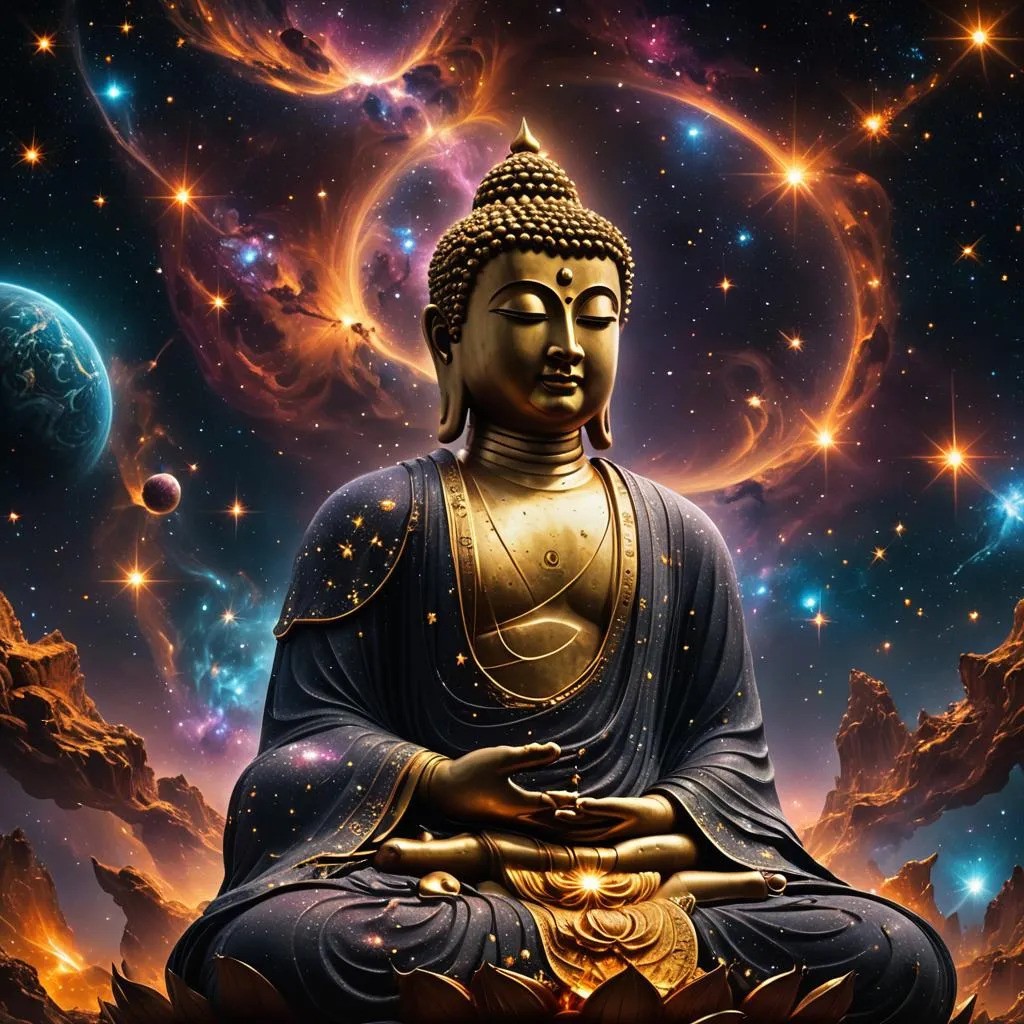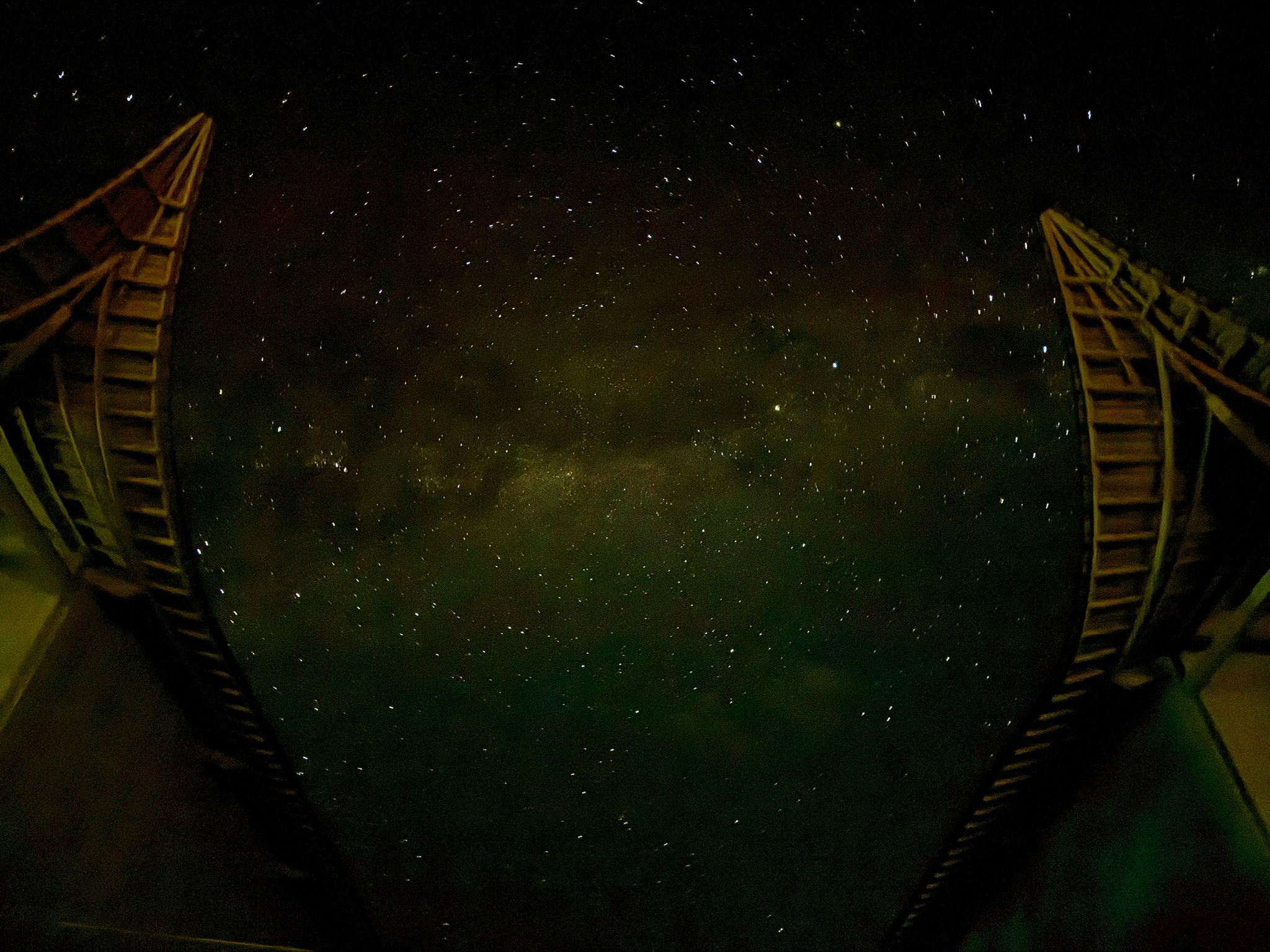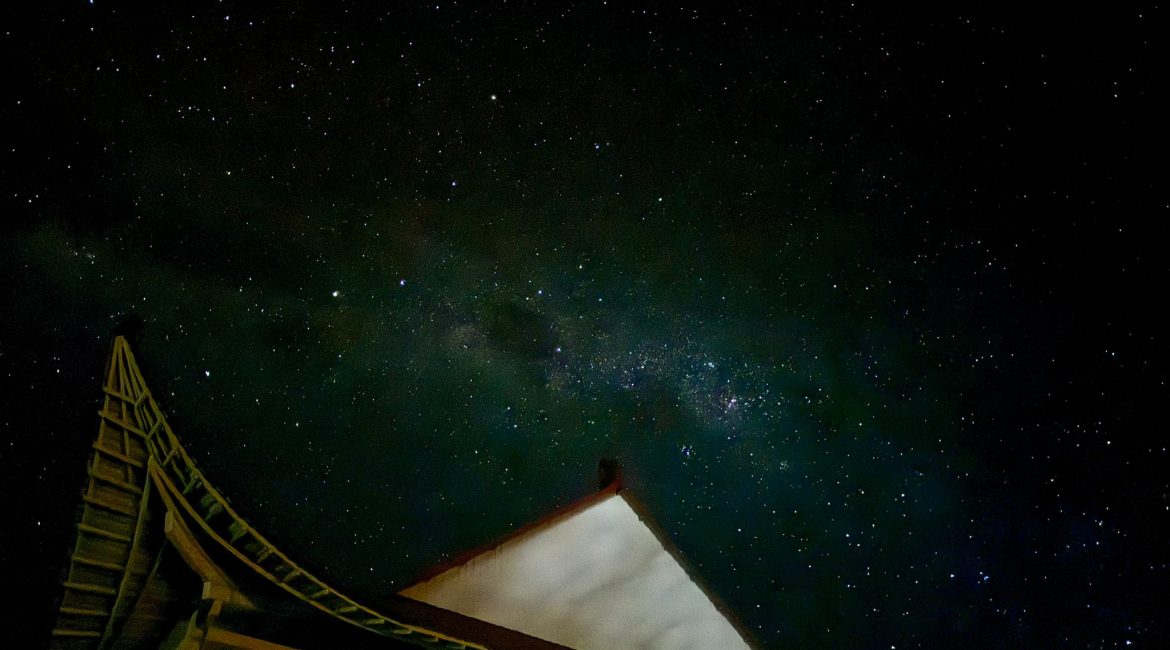By Henry Blanke
Henry Blanke is a Soto Zen Buddhist living in New York City. His writing has appeared in Refuse Journal, Speculative Non-Buddhism, Religious Socialism and the Tattooed Buddha. He walks the city in order to experience it.
Buddha is present in every particle of the universe. In every living being.– Avatamsaka Sutra (Book 37)
Big fish have little fish on their backs to bite ‘em. And little fish have littler fish and so on ad infinitum. – Ogden Nash
For its cosmology and cosmic view of the Bodhisattva path, the Avatamsaka Sutra (most commonly translated as Flower Garland or Adornment) is incomparable. The holographic images and metaphors, most stunningly that of Indra’s Net, are mind-bending and, one might say, psychedelic. Actually, it is a collection of smaller scriptures which were collected in the fourth century CE and thought to be the philosophical foundation of Chinese Chan and Japanese Zen (the latter being the practice). [1]
In fact, the Huayan school, which flourished briefly in China between the seventh and tenth centuries, developed not only a philosophy but a meditation practice using the Avatamsaka as a framework. Let us now explore this most profound of Buddhist writings and its Huayan elaboration.
The early books of the sutra have Buddha and assemblies of bodhisattvas (including Samantabadhra and Manjusri) discoursing on the nature of reality: incalculable, infinite and imbued with Buddhahood. At some point Shakyamuni ascends from the seat of his enlightenment to various multi-jeweled palaces and heavens adorned with blazing flowers to delve deeper into the interpenetrating universe and the stages along the bodhisattva path. The middle books further illuminate this in the teachings of Gunavana concerning the ten practices of the bodhisattva. Among these are giving delight, peaceful conduct, patience and non-resentment, and skillful manifestation. [2] These roughly correspond with the Mahayana paramitas.
By the later Book 30, both the historical and cosmic Buddha simultaneously discuss the unimaginably infinite and interdependent nature of the universe and beings contained therein. Books 31 and 32 are especially interesting as they seem to anticipate Dogen’s views on the relativity of time and space. The Avatamsaka culminates in the mighty Gundavyha which originally appeared as a sutra in its own right. Here we meet the disciple Sudhana on an epic quest for awakening. Along the journey he encounters teachers who remarkably include women and men, laypersons and priests, beggars and kings. [2]
This brief sketch in no way conveys the depth and cortex convulsing intricacy of the Flower Garland Sutra, but I will now continue with the main focus of this essay and look at the exegetical and practical elaborations of the Huayan school. In particular, I am interested in its actual practice and relationship to both Zen and Vajrayana Buddhism. As mentioned above, it is believed that Huayan is the philosophy of Zen while Zen is the practice of Huayan. [3]

But the latter lineage had its own distinctive meditational practices involving contemplative immersion in the vast interfusion of all things via the devotional chanting, copying (sometimes in the writer’s own blood!) and deep study of the Avatamsaka Sutra. These were by no means scholastic exercises, but more akin to bathing in the dazzling imagery and metaphors of the scripture as one would immerse oneself in a great symphony.
Huayan’s central meditational schema is the theory of the “fourfold dharmadhatu” or four cognitive lenses by which to apprehend reality. The first dharmadhatu is the ordinary perception of the world as composed of discrete things and events. The second is the perception of the absolute as being a formless totality. In the third the meditator intuits the inextricable interdependence of the particular and the universal. The fourth dharmadhatu goes even deeper by contemplating the interpenetration and harmonization of each particular phenomenon with all others. [4]
This is unique in that the absolute totality is revealed through the mutual interpenetration of the phenomenal world; essentially a cosmic ecology. All of this should sound familiar to Zen practitioners, as Huayan had a deep influence on Chinese Chan. This can be seen in the Caodong school (Japanese Soto) founder Dongshan Liangjie’s formulation of the Five Ranks of insight as well in the Ten Oxherding pictures. And Robert Aitken has written that to gain full insight into the Hear Sutra’s famous “form is emptiness; emptiness is form” one must penetrate the Avatamsaka Sutra. [5] However, when I study this sutra it does not bring to mind the rather monochromatic Zen sensibility so much as the vividly psychedelic imagery of Tibetan Buddhism.
Now let’s turn our attention the Vajrayana.
Though less commented on then the connection between Huayan and Chan, the former has a well developed esoteric practice strikingly similar to Tibetan Vajrayana Buddhism which utilizes hosts of multi-colored female and male deities and various mytho-contemplative entities. Esoteric Huayan, introduced by the 11th century monk Daosen, employs techniques involving mantras, mudras and visualizations usually associated with Vajrayana. Central here is the mantra associated with the goddess Cundi: “. . . one recites the Cundi dharani and/or visualizes [its syllables] . . . then imagines the goddess’s image.” [6]
Just as Huayan philosophy became important to Japanese Zen via Dogen’s experience in China, its esoteric practices were established in Japan by the Shingon school. Also, the gathas (verses) employed by Huayan as tools enabling practitioners to be mindful in everyday situations echo Tibetan lojong or mind training slogans: Compare “seeing grateful people [you] should wish that all beings be able to know the blessings of the buddhas. . . .” (Huayan) with the mind training slogans which remind us to “be grateful to everyone” and while experiencing pain to wish everyone to be free of suffering. [7]

However, I have found no evidence that the Tibetan subtle body and kundalini visualizations employed in sexual yoga was practiced in China or Japan. Nor is the left-handed Tantric ritual use of meat, alcohol and cremation ground meditation seen in esoteric Huayan or Shingon. But both Vajrayana and Huayan/Shingon base their methods on treating the human body as replicating the universe in microcosm.
Now let’s contemplate one of the most awe-inspiring images in religious history: Indra’s Net. Imagine a multi-dimensional web where at the intersection of each strand is a crystalline jewel. Each jewel contains the reflection of those surrounding it which each in turn reflects the light of the jewels around it and so on infinitely. This profound metaphor expresses the totality of all existence as contained in each particle, each event, each person.
Or you can think of yourself as Empress Wu Zeitian who has summoned Huayan Master Fazang to her court. He tells her to construct a room where the ceiling, floor and walls are covered with mirrors. I can imagine the Empress entering the room and perhaps fainting. Or becoming enlightened. Ultimately, I believe that the philosophy and practice of Huayan Buddhism holds that suffering is caused by clinging to a single perspective of the world and encourages us to take a multi-perspectival view.
Allow me to conclude with two personal notes. Long before I had heard of the Avatamsaka Sutra I would often have the uncanny feeling that the actions I took, trivial or significant, somehow effected the lives of those around me who then effected the lives of people they knew and so on indefinitely. And if I had taken a single different course, however small, my life would be unimaginably different. I remember thinking that for each action not chosen by myself and others spring billions of alternate worlds. Perhaps this accounts for my later fascination with Huayan.
Then, about 15 years ago, I had the opportunity to take psilocybin with a friend. We listened to the music we both loved and walked along the beach at the Atlantic Ocean, both blissful experiences. I was still awake and feeling the effects of the drug early the next morning when I saw a large spider’s web covered with dew. I became transfixed and must have gazed at it for quite a long while thinking of jewelled palaces and celestial assemblies of buddhas and bodhisattvas. Then it dawned on me that the web was a kind of microcosmic image of the universe. This epiphany came with such intensity that I felt indescribable waves of ecstasy throughout my body.
At this point in my life, I was a Zen practitioner and was familiar with Indra’s Net, but to my knowledge had never seen a visual representation of it. Then some years later, I read a description of it by Alan Watts and the accompanying photo stopped me in my tracks. It was a spider’s web covered with morning dew.
References
[1] Robert M. Gimello (nd). “Huayan” in Lindsay Jones, ed. Encyclopedia of Religion Volume 6.
[2] Thomas Cleary. 1993. The Flower Ornament Scripture: A Translation of the Avatamsaka Sutra. Boston: Shambhala.
[3] D. T. Suzuki, quoted in “Reflections of the Flowerbank World.” Upaya Zen Center, Summer 2014.
[4] Alan Fox (nd). “The Practice of Huayan Buddhism.”
[5] Robert Aitken (nd). “Caught in Indra’s Web.” Lion’s Roar.
[6] Robert M. Gimello. 2004. “Icon and Incantation: The Goddess “Icon and Incantation: The Goddess Zhunti and the Role of Images in the Occult Buddhism of China.” In Phyllis Granoff and Koichi Shinohara (eds.). Images in Asian Buddhism: Texts and Contexts, 71-85.
[7] Taigen Dan Leighton. 2006. “Huayan Buddhism and the Phenomenal Universe of the Flower Ornament Sutra.” In Buddhadharma, Fall 2006.


